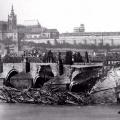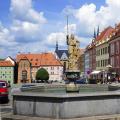Central District of Russia
Central federal district is an administrative formation located in the western part of Russia and has an area of 650.2 thousand km². The population of the most populous district of the Russian Federation reaches 38.7 million people. A detailed map of the Central Federal District denotes Administrative division region, which includes 18 constituent entities of the Russian Federation (17 regions and the city of Moscow).Besides, interactive map The Central Federal District reflects the external borders of the region, which borders the Republic of Belarus in the west, and neighbors with Ukraine in the southwest. The Central Federal District shares its internal borders with the Volga Federal District in the eastern part, with the Southern Federal District in the southern part, and in the north the region borders on the Northwestern Federal District.
The administrative center of the region is its largest city - Moscow with a population of almost 12 million people. The map of the Central Federal District helps to determine the location of the city, which is located in the very center of the East European Plain, between the Volna and Oka rivers, on the Moskva River. Having the status of a constituent entity of the Russian Federation, Moscow borders on such regions as Kaluga and Moscow. The major cities of the Central Federal District are Voronezh, Yaroslavl, Ryazan, Lipetsk, Tula.
The economy of the regions of the Central Federal District has its own specialization. On southern territories districts (Central Chernozem region) mainly developed agricultural production, mining, food, metallurgical industry, as well as some branches of chemistry and mechanical engineering. Central economic region, which includes the center and north of the region, marked on Show detailed map Central Federal District, specializes in metalworking, mechanical engineering, military-industrial and chemical production, light industry.
The Central Federal District consists of 18 constituent entities. It was formed on May 13, 2000. Among all federal districts, it is the leader in terms of population, as well as the number of constituent entities of it.
List of subjects of the Central Federal District:
|
Subject |
Centre |
Population million |
Area sq. Km |
|
Ivanovo region |
|||
|
Oryol Region |
|||
|
Tula region |
|||
|
Belgorod region |
Belgorod |
||
|
Vladimir region |
Vladimir |
||
|
Kaluga region |
|||
|
Kursk region |
|||
|
Tambov Region |
|||
|
Yaroslavskaya oblast |
|||
|
Ryazan Oblast |
|||
|
Moscow region |
|||
|
Smolensk region |
Smolensk |
||
|
Kostroma region |
|||
|
Tver region |
General characteristics of the Central Federal District
The Central Federal District is home to 39 million 216 thousand people. This is almost 27% of the total population of the Russian Federation. The density is 60.3 people per square kilometer. The urban population accounts for 82%, cities - 310. In general, the district consists of small regions, however, all of them are densely populated.
It has no outlet to the sea or the world's oceans. The total area is 650205 square kilometers. It is noteworthy that the Central Federal District consists entirely of regions (excluding Moscow). The okrug has borders with two states: with Belarus in the west and with Ukraine in the south-west.
Climate and geography of the Central Federal District
The Central Federal District is located on the East European Plain, there are a number of uplands (Central Russian, Valdai), however, in general, the territory of the district can be considered flat, high mountains there is no. Highest point- 347 meters. Natural areas: mixed forest and broad-leaved forest mainly in the north, steppe and forest-steppe mainly in the south.
The climate throughout the Central Federal District is moderately continental, average temperature depends on latitudes, ranges from -7 to -14 in January and from +16 to +22 degrees Celsius in July.
The largest rivers of the Central Federal District: Western Dviga, Dnieper, Don, Volga. There are practically no large lakes, but there are many reservoirs, which are the most significant water bodies (Rybinskoye, Kostromskoye, etc.).
Economy and resources of the Central Federal District
The Central Federal District has a developed network of roads and railways. Thus, the share of highways accounts for 117 thousand kilometers, or 22% of their all-Russian length. Railways- 17.2 thousand kilometers (20% of the all-Russian indicator). Quantity industrial enterprises huge, even listing the most significant will require a separate article.
There are also deposits of minerals, including very significant ones, such as, for example, the Kursk magnetic anomaly. On the territory of the Central Federal District there are deposits of ore, peat, granite, coal, phosphorite and bauxite, as well as a number of other minerals are mined.
Tourism in the Central Federal District
You can read more about tourism and the sights of the Central Federal District in the descriptions of the regions. For tourists, the district is very attractive, there are both natural and architectural sights. Moscow alone attracts millions of tourists every year, and there are still gold ring Russia and hundreds of other interesting places.
In terms of tourism, the Central Federal District stands out against the background of almost all other districts due to its developed transport infrastructure. Almost any part of the district can be reached without problems, but about the popular and Famous places and needless to say.
Brief description of the subjects of the Central Federal District
Given below a brief description of for tourists of all subjects of the Central Federal District. The information is given briefly so that you can briefly learn about each area and choose the most interesting direction for yourself. By following the links in the article, you can get acquainted in detail with the description of each subject of the Central Federal District, as well as find out other useful information.
Belgorod region
Formed on January 6, 1954. On the territory of the Belgorod region there are a large number of natural, cultural and historical attractions. Transport and tourism infrastructure is well developed.
The Belgorod region is shallow, there is not only a small amount of precipitation, but also a very small amount of water bodies. Swamps, lakes and rivers occupy no more than 1% of the region's territory.
The Bryansk region was formed on July 5, 1944. On its territory there are more than four thousand historical monuments, more than 10 sanatoriums, four dozen hotels, and there are also recreation centers. In the Central Federal District, the Bryansk region occupies a worthy place in terms of the number of tourists; this is also facilitated by the fact that it borders on Ukraine and Belarus.
The main directions of tourism: active tourism, cultural and educational, ecotourism, as well as various festivals.
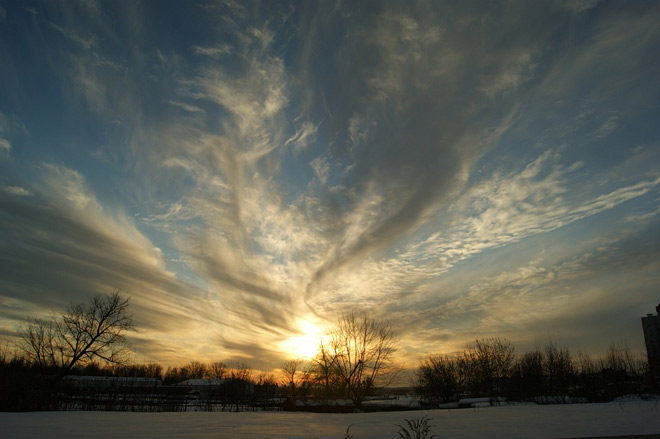
Vladimir region
It was formed on August 14, 1944. The Vladimir region is included in the route "The Golden Ring of Russia", so many tourists visit it. Note that about 70% of tourists come to the region for cultural and educational purposes.
There are 26 museums on the territory of the Vladimir region, there are eight objects world heritage UNESCO. Active measures are being taken in the region to develop tourism, there is a separate website, there are tourist centers.
Voronezh region
Voronezh region was formed on June 13, 1934. It is the southernmost region of the Central Federal District of Russia. The region has seven historical cities, more than 2600 historical monuments, three reserves, 20 museums. The tourist infrastructure is well developed, but the region plans to further develop this direction.
In Moscow, tourism is a very important part of the city's economy. More than 13 million people visit Moscow annually. The tourist infrastructure is very well developed. Actually, it is impossible to write about Moscow in one paragraph.
Ivanovo region
The Ivanovo region is part of the "Golden Ring of Russia". Tourism is a fairly important part of the region's economy; there are many objects in the Ivanovo region that will be of interest to tourists. Recently, auto tourism has been actively developing - people come here for a few days from Moscow and neighboring regions.
Its useful to note climatic resort and the city-museum Ples, which is visited annually by up to half a million people (there is ski resort), cruise tourism is developing (along the Volga), festivals and other events are held. Many come to shop tours to buy textiles in Ivanovo.

Kaluga region
Tourism in Kaluga region develops annually, it is visited by more than 1.4 million people and this number is growing. A characteristic feature of the Kaluga region is that there are quite a few areas of tourism here: ecotourism, ethno-tourism, agro-tourism, cultural and educational, event-driven.
It is the leader of the Central Federal District in rural tourism; such objects as the Devil's fortified settlement, Kaluzhskie Zaseki, and the Ugra National Park are popular. There are 1800 monuments of archeology, architecture and history in the Kaluga region. Pilgrimage tourism is very developed: there are monasteries known throughout the country (Optina Pustyn, etc.).
Festivals and other interesting and thematic events are held annually. The tourist infrastructure in the Kaluga region is well developed.
Kostroma region
In terms of attractiveness for tourists, the Kostroma Region occupies a worthy place among all the subjects of the Central Federal District. Its administrative center, Kostroma, is part of the "Golden Ring of Russia"; in addition, cruise, ethnographic, recreational and other types of tourism are developed.
There are 32 museums, 18 natural attractions, about 2.5 thousand monuments of history, architecture and archeology in the Kostroma region. Also, the Kostroma region is notable for the presence of 79 protected natural areas that attract ecotourism lovers.
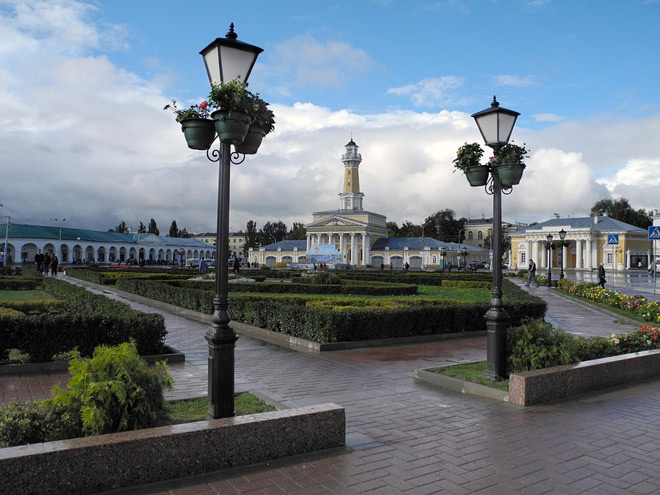
Kursk region
The Kursk region is rich in water resources, especially when compared with a number of other subjects of the Central Federal District. That is why it is popular with lovers of fishing, hunting, as well as ecological tourism.
There are many cultural attractions and significant architectural monuments and interesting museums in the Kursk region.
Lipetsk region
Lipetsk region is popular with fishermen, hunters and ecotourists. There are more than 840 historical and architectural monuments in the region, there are opportunities for active winter and summer recreation.
Moscow region
The Moscow Region is the leader of the Central Federal District and one of the leaders in the Russian Federation in terms of the number of properties cultural heritage: there are about 6500 of them here. The region has conditions for all types of tourism, the tourist infrastructure is very well developed.
Oryol Region
The region is dominated by cultural, educational and ecological tourism. There are a large number of museums, including the Turgenev estate, it is also worth noting national park Oryol woodland, which is visited annually by thousands of nature lovers. Peculiarity Oryol region- literary tourism, there are a lot of museums of famous Russian writers in the region.
Ryazan Oblast
The Ryazan region boasts a developed tourism industry, there are reserves, museums, monasteries, beautiful natural landscapes and a rich historical and cultural heritage. All this attracts lovers of all types of tourism. The most popular are ecotourism (outdoor recreation), as well as spa treatment and cultural tourism.
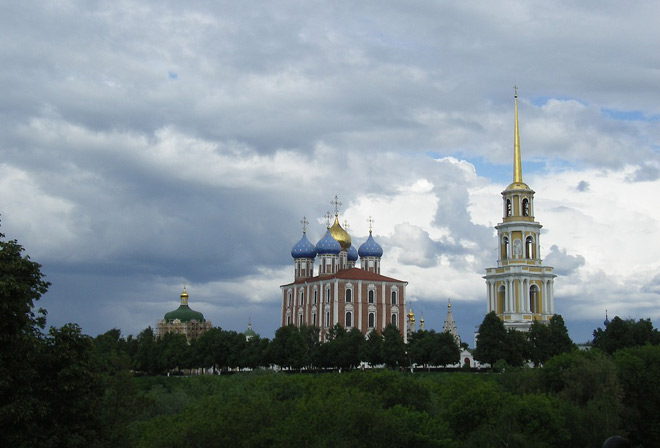
Smolensk region
V Smolensk region more than 30 museums, 20 sanatoriums and resorts, there are interesting museums, natural areas. However, the region is not among the leaders of the Central Federal District in terms of the number of tourists. Nevertheless, this region should be recognized as interesting enough to visit.
Tambov Region
The region has 1340 objects of historical and cultural heritage, 66 museums and a very large number of natural attractions, of which it is worth mentioning Barskaya Gora, Voroninsky Reserve, Catherine Dendrological Park.
A large number of recreation centers attract fans of fishing and hunting, there are conditions for an active summer and winter holiday... There are facilities for agritourism. The tourist infrastructure of the region is actively developing.
Tver region
The region is one of the leaders in the Central Federal District in terms of the number of tourists. It is curious that in the 80s of the last century the region ranked second in the RSFSR in terms of the number of tourists visiting it.
In the Tver region, very close attention is paid to the tourism industry, 8 clusters have been created, of which we separately mention Seliger, Russian Venice, Pearl Thread. Practically all areas of tourism are developed, large and famous festivals are held (Invasion, the festival of chanson and others).
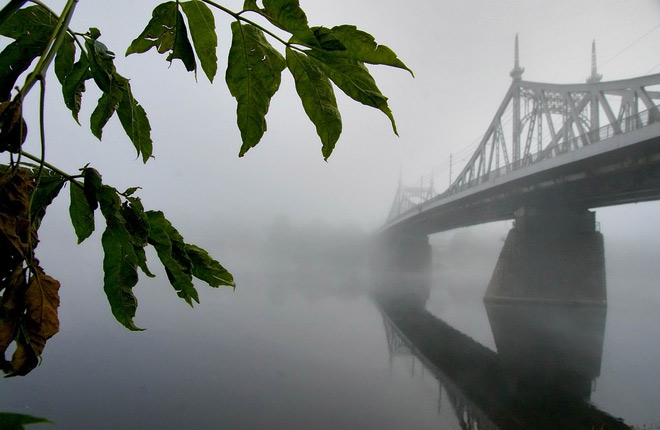
Tula region
The Tula region is especially popular among fans of hunting and fishing: among all the subjects of the Central Federal District, it can be considered one of the leaders in this area. Popular wellness rest, there are natural attractions, as well as over a thousand monuments of historical and cultural heritage.
Yaroslavskaya oblast
Three cities of the region are included in the "Golden Ring of Russia" (Rostov Veliky, Pereslavl-Zalessky and Yaroslavl). There are 250 museums in the Yaroslavl region, a huge number of monuments of historical and cultural heritage. There are conditions for all types of tourism: recreational, health, cultural, educational, environmental, event and other types. According to estimates, the region is in the top 20 of Russia in terms of tourism potential.

The Central Federal District was formed by the Decree of the President of the Russian Federation No. 849 dated May 13, 2000.
The Central Federal District includes 18 constituent entities of the Russian Federation: Belgorod, Bryansk, Vladimir, Voronezh, Ivanovskaya, Kaluga, Kostroma, Kursk, Lipetsk, Moscow, Oryol, Ryazan, Smolensk, Tambov, Tver, Tula, Yaroslavl regions and the city of Moscow. The center of the Central Federal is the city of Moscow (area 1.1 thousand km2, population as of 01.01.2007 - 10.4 million people).
The area of the territory of the Central Federal District is 650.7 km2 or 3.8% of the area of the territory of Russia. The district is the most populated in Russia (37.3 million people), while 78.8% of the population lives in cities.
In terms of population density, as well as the number of inhabitants, the Central Federal District ranks first among the federal districts: 57.2 people. per km2. The maximum population density is in Moscow (9,571.6 people per km2) and the Moscow region (141.7 people per km2), the lowest population density is in the Kostroma (13.2) and Tver (19.3) regions.
The Central Federal District belongs to highly urbanized regions: almost three quarters of the population lives in 40 large cities.
The largest cities in the central federal district are Moscow, Voronezh, Yaroslavl, Ryazan, Tula, Lipetsk, Ivanovo, Bryansk, Tver, Kursk. The number of other cities does not exceed 440,000 people. In total, there are 300 cities in the district.
The territory of the Central Federal District is located in several natural areas- coniferous, mixed and deciduous forests, forest-steppes and steppes. The predominant part of the territory belongs to the basins of the Volga and Don rivers.
The main natural wealth of the Central Federal District is the iron ore of the Kursk Magnetic Anomaly, which ranks first in the world in terms of geological reserves, and first in Russia in terms of balance reserves. Shallow bedding and high quality ores determine the efficiency of their extraction. Of other species mineral resources in the district there are large reserves of chalk, limestone, refractory and brick clays, marl, as well as building, glass and molding sands. The Central Federal District is not rich in fuel and energy resources. Fuel reserves are represented by a lignite basin, which is located on the territory of 5 regions - Tver, Smolensk, Kaluga, Tula and Ryazan. The balance reserves of coal are about 4 billion tons, the depth is up to 60 meters, the thickness of the seams is 20–46 meters, the geological and hydrological conditions are unfavorable. Coals near Moscow are of low quality (low calorific value, high humidity, ash and sulfur content). There are peat deposits in the northern and central parts of the Okrug. Opening is predicted oil fields in Ivanovo, Kostroma and Yaroslavl regions.
The specialization of the economy of the Central Federal District is territorially differentiated. The south of the district (Central Chernozem economic region) specializes in mining, metallurgy, some branches of mechanical engineering and chemistry, as well as intensive agricultural production. In the north and in the center (Central Economic Region), highly developed diversified mechanical engineering and metalworking prevail, chemical industry, various industries, some branches of light industry.
Leading industries in the structure industrial complex The Central Federal District are mechanical engineering and metalworking. The district has developed the rocket and space industry, aircraft construction, the electronic and radio industries, railway engineering, the production of precision machines, numerically controlled machine tools, and robotics. An important branch of the region's specialization is the chemical industry, represented not only by the production of fertilizers, but also by the chemistry of organic synthesis (synthetic resins, plastics, lavsan, etc.). The Okrug produces up to 30% of light industry products, and occupies a leading place in the country in the production of cotton, linen, woolen and silk fabrics. Widely developed food industry, in which the leaders are the sugar, flour-and-cereal, butter, meat, alcohol, confectionery, fruit and vegetable and tobacco-makhorka industries.
The Central Federal District is one of the largest manufacturers printing products, a significant share of which is produced at printing plants in Moscow and the Moscow region, in Tver, Yaroslavl, Ryazan.
The Central Federal District is the leader among the federal districts in all major indicators of socio-economic development. Only in terms of the total volume of industrial production, it is somewhat inferior. The Moscow region (Moscow and the Moscow region) occupies a leading place in the district's economy, providing 84% of federal budget revenues. The district is distinguished by the most significant territorial differentiation of the population's income in the country (tenfold between Moscow and the Kaluga region).
The largest economic, political, scientific and cultural center of Russia - its capital - is located on the territory of the Central Federal District. Moscow is the largest financial center of Russia, the most important transport hub, providing a wide range of transport services... The country's highest level of development of the service sector, wholesale and area-oriented concentration of consumer demand has been achieved here. The sector of information and communication services is developing rapidly in the city. In the field of industrial production in Moscow, the leading role is played by the science-intensive industries of mechanical engineering, the automotive industry, machine tool building, as well as the electric power industry, the production of building materials, and various branches of the light and food industries.
Among other districts, the cities of Voronezh, Tula and Yaroslavl stand out.
The area of the district is 652.8 thousand square kilometers (3.8% of the territory of Russia), the population is 38.4 million people (2010). Of these, 31 million 261 thousand live in cities, and 7 million 176 thousand - in rural areas (2010). In terms of population density, the district ranks first among federal districts (57 people per 1 sq. Km) and belongs to highly urbanized regions: almost three quarters of the population lives in 40 large cities. National composition: Russians - 34.7 million (91.3%), Ukrainians - 756 thousand (2%), Tatars - 288 thousand (0.8%), Armenians - 249.22 thousand (0.7%), Belarusians - 186.32 thousand (0.5%), Azerbaijanis - 161.85 thousand (0.4%), Jews - 103.71 thousand (0.3%), Georgians - 80.7 thousand (0.2%), Moldovans - 67.8 thousand (0.2%), Mordovians - 67.5 thousand (0.2%).
The territory of the district is located in several natural zones - a zone of coniferous forests, a zone mixed forests, zone of deciduous forests, zone of forest-steppe, zone of steppe. The predominant part of the district's territory belongs to the basins of the Volga and Don rivers. The main natural wealth of the district is the iron ore of the Kursk Magnetic Anomaly (KMA). In terms of geological reserves, KMA ranks first in the world. The shallow occurrence and high quality of ores determine the efficiency of their extraction. Other types of mineral resources include large reserves of chalk, limestone, refractory and brick clays, marl, building, glass and molding sands. The district is not rich in fuel and energy resources. Fuel reserves are represented by the Moscow Region brown coal basin, which is located on the territory of five regions - Tver, Smolensk, Kaluga, Tula and Ryazan. The balance reserves of coal are about 4 billion tons, the depth is up to 60 meters, the thickness of the seams is 20-46 meters, the geological and hydrological conditions are unfavorable. Coals near Moscow are of low quality (low calorific value, high humidity, ash and sulfur content). There are peat deposits in the northern and central parts of the Okrug.
V economic complex Central District industry plays a leading role. Other industries include agriculture (especially in the south of the district), construction, trade and catering... In the structure of industrial production, the leading role is played by industries with a high share of added value, as well as those determining scientific and technological progress. These are the industries of mechanical engineering and metalworking (more than 22% industrial products), food industry (over 22%), electric power industry (about 20%). Ferrous metallurgy, chemical and petrochemical industry, building materials industry.
The specialization of the district's economy is territorially differentiated. The south of the district (Central Black Earth Region) specializes in mining, metallurgical, food industries, some branches of mechanical engineering and chemistry, as well as intensive agricultural production. In the north and in the center (Central Economic Region), highly developed diversified mechanical engineering and metalworking, the chemical industry, branches of the military-industrial complex, and light industry prevail. The leading industries in the structure of the industrial complex of the Central Federal District are mechanical engineering and metalworking. The district has developed the rocket and space industry, aircraft construction, the electronic and radio industries, railway engineering, the production of precision machines, numerically controlled machine tools, and robotics. An important place in the structure of industrial production is occupied by the chemical industry, represented not only by the production of fertilizers, but also by the products of organic synthesis: synthetic resins, plastics, lavsan.
The region produces up to a third of the products of the Russian light industry, occupies a leading place in the country in the production of cotton, linen, woolen and silk fabrics. Sugar, flour-and-cereal, butter, meat, alcohol, confectionery, fruit and vegetable and tobacco industries are leading in the highly developed food industry. The Central Federal District is one of the largest manufacturers of printing products, a significant share of which is produced at factories in Moscow, the Moscow Region, Tula, Tver, Yaroslavl, Ryazan. The Moscow region (Moscow and the Moscow region) occupies a leading place in the district's economy, providing 84% of the district's receipts to the federal budget. The district is distinguished by the most significant territorial differentiation of the population's income in the country (tenfold between Moscow and the Kaluga region). The fuel and energy complex of the Central Federal District includes the country's most powerful electric power industry, a developed oil refining industry, coal and peat enterprises. On the territory of the district there are the Moscow, Ryazan and Yaroslavl oil refineries, which provide consumers with the main types of oil products.
On the territory of the Central Federal District there is the largest economic, political, scientific and cultural center of Russia - its capital, the city of Moscow with a population of over 12 million people. It is the largest financial center in Russia, the most important transport hub, providing a wide range of transport services. The country's highest level of development of the service sector, wholesale and retail trade has been achieved here. The sector of information and communication services is developing in the city. In the field of industrial production in Moscow, the leading role is played by the science-intensive branches of mechanical engineering, the automotive industry, machine-tool building, the electric power industry, the production of building materials, and various branches of the light and food industries. Among the others industrial centers districts are allocated Voronezh, Tula, Yaroslavl. The prerequisites for the further development of the economy of the Central Federal District are its favorable economic and geographical position, production and scientific and technical potential and developed
The Central Federal District includes 18 territorial entities. And for this reason, it is the largest in terms of their number. There are no republics in the Central Federal District, only regions and the only one which is the capital of our country, Moscow. By the way, she is not only largest city the whole district, but also its administrative center... However, first things first.
Peculiarities
Before considering the composition, it is worth noting the features that distinguish it.
So, the Central Federal District was formed on May 13, 2000. He has no outlet to any sea and, accordingly, the ocean. But nevertheless, this is the largest district in terms of population and the number of territorial entities, which was already mentioned above. A little more than 39 million people live in the Central Federal District. This is approximately 26.7% of the total number of citizens of the Russian Federation. The density, by the way, is ~ 60.14 people per km².
The Central Federal District includes two large economic regions, which includes 310 cities. This is the Central Black Earth and Central regions... The area occupied by them is 650 205 km². This is approximately 3.8% of the entire territory of Russia. But, despite such small dimensions, the Central Federal District is the basic macro-region of the entire country.
Capital
As mentioned above, Moscow is part of the Central Federal District. It occupies the smallest area when compared with other subjects of the Central Federal District - only 2,511 km². But, despite this, there are on average 10 times more people living in Moscow than in other areas of the district. There are 12,330,126 people in the capital, according to the latest statistics.
What can you tell about Moscow? After all, this is the capital, and that says it all. Still, it should be noted that the city is the largest financial center on a national scale and one of the world's largest business megalopolises. And perhaps it will not be superfluous to say that it is Moscow that is in first place among all cities on our planet in terms of the number of dollar billionaires living on its territory. There are 79 of them here. In any case, as of 2011.
And of course, Moscow is the largest transport hub in Russia. During the year, the volume of passenger traffic is about 11.5 billion people.
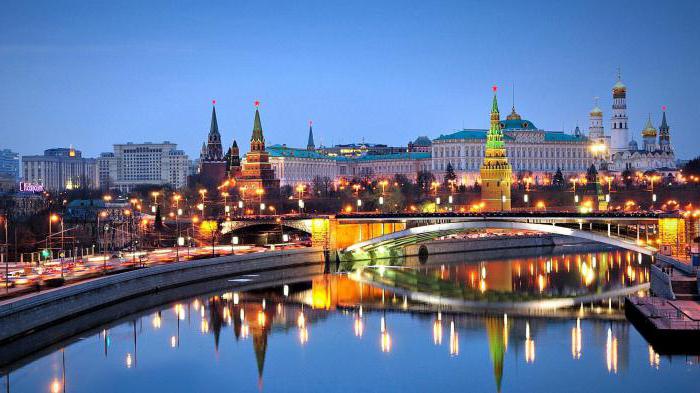
Moscow region
This is the next most populous subject of the Central Federal District after the capital. The area of the region is approximately 44.4 thousand km². About 7.32 million people live in this territory.
In terms of GRP, the Moscow Region ranks third among all Russian regions. This is a well-developed region, which is facilitated, by the way, by the neighborhood with the capital. On the one hand, this fact plays a positive role. But on the other hand, the capital takes over labor resources area. It's just that many people living in the Moscow region work in the metropolis. And for this reason, their taxes go to the Moscow budget.
Industry is well developed in this region. In particular, metalworking and mechanical engineering. It produces rocket and space technology, nuclear and thermal power equipment, mainline diesel locomotives, electric trains, buses, carriages, excavators and much more.
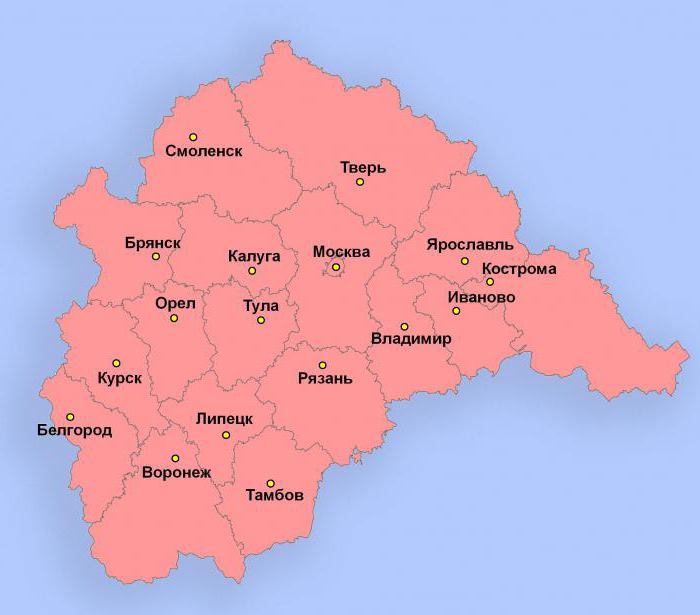
Other regions and their significance
The Lipetsk Region is also part of the Central Federal District of Russia - a region located on a territory that has been inhabited since the Upper Paleolithic (40-12 thousand years ago). So scientists say. 85% of the region's territory is covered with black earth, and 300 mineral deposits have also been discovered here. The Leningrad Region is the leader in the Russian Federation in terms of reserves of carbonate raw materials.
Talking about the composition of federal districts, one cannot fail to note the Ivanovo region, which is part of the Central Federal District. After all, 32.8% of the total Russian volume of light industry products is produced on its territory (indicator No. 1).
The Oryol Region is also included in the Central Federal District. It is distinguished by its economy, which has a pronounced agrarian-industrial character.
The Tula region is also included in the Central Federal District. This is one of the most socially disadvantaged regions. Low fertility, increased mortality, a large number of accidents, poor ecology, and more than 420 thousand people (and in total there are ~ 1,500,000 citizens living in TO) are pensioners. But the food industry is well developed here. The most striking example is the confectionery factory “ Yasnaya Polyana", Which produces gingerbreads known throughout Russia.

Features of larger areas
Few of the federal districts can boast of such a variety of territorial entities as the Central Federal District. Not all areas have been listed above.
There is also Belgorodskaya. It is special in that about 40% of the reserves are concentrated on its territory. iron ore RF. A good ecological situation is observed in the Kaluga region. Sod-podzolic soils occupy 75.6% of its territory. 45.2% of the space is occupied by forests, and the total timber stock, therefore, is 267.7 million m³.
In the Vladimir region, the ecological situation is bad, but mechanical engineering is well developed. Due to this area, about 40% of the industrial product is created.
The Kursk and Tambov regions are also part of the Central Federal District (CFD). The main activity of the first is in the extraction and processing of ore, as well as in mechanical engineering. The industry of the Tambov region is recognized as one of the leading sectors of the regional economy.
The Bryansk region is known for its highly developed railway transport and radio electronics. And also timber processing. The Yaroslavl Region, which also largely determines the important position of the Central Federal District, is one of the most industrially developed regions. About 300 local enterprises are of national importance. In addition, this area is known for good mineral resources (thin band clays, quartz sand, peat, gravel, etc. are widespread here).

Finally
As you can see, quite solid in economically is the Central Federal District. The composition of the areas, as well as their features, is useful to know. But the last 5 regions have not yet been mentioned. But they are also important.
The Ryazan region, for example, is known for the fact that on its area there are 103.5 thousand hectares of the most important natural areas. And protected, respectively. In the Smolensk region, dairy and meat cattle breeding is well developed. Agricultural land occupies about 1 750 000 hectares!
Voronezh region is the absolute leader in the whole country in terms of employment. Kostromskaya is known for the presence of the largest enterprises in the Russian Federation specializing in the production of lifting and oil and gas equipment. And finally, the Tver region, the last one. Construction and trade are well developed on its territory.
What conclusion can be drawn? Unambiguous. All areas that make up the Central Federal District are special and valuable in their own way. And thanks to each of them, the Central Federal District is the most highly developed in Russia.


